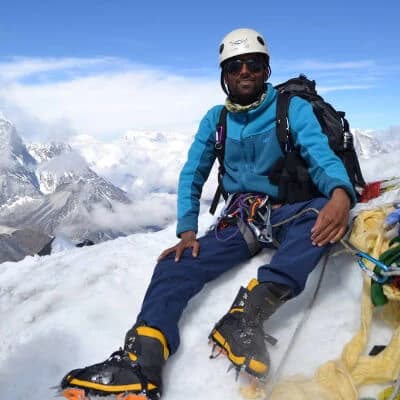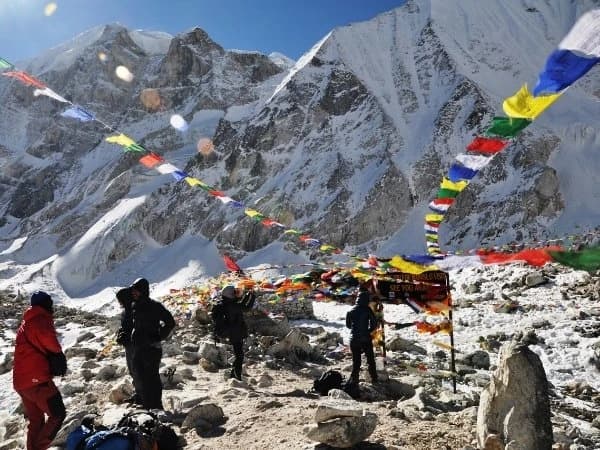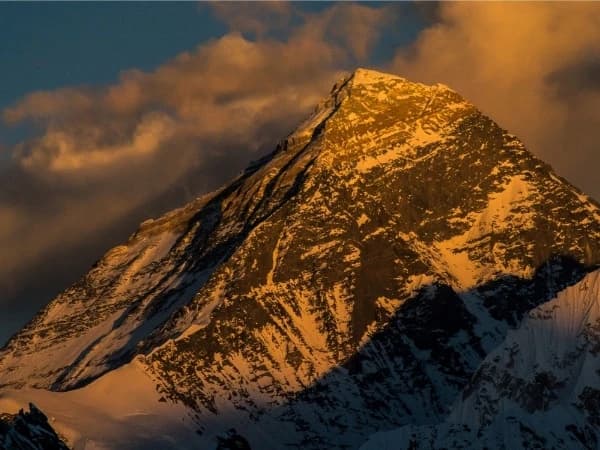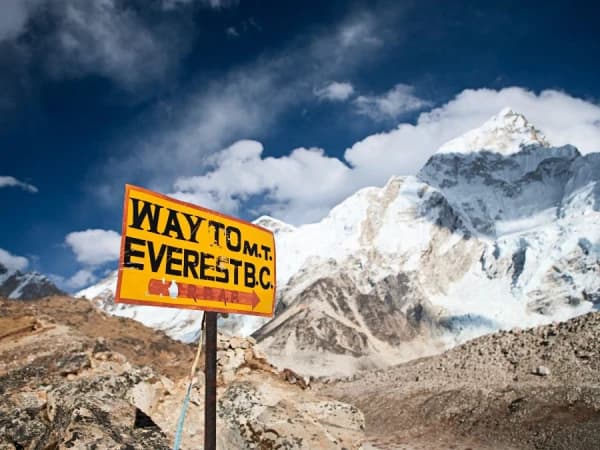Annapurna I: The Deadliest 8,000er Peak
Rising at an altitude of 8,091 meters (26,545 feet), Annapurna I is the world’s 10th-highest peak. This towering peak is located in the north-central part of Nepal and is the main range within the Annapurna Massif. Despite being lower than Everest (8,848m), the tallest peak in the world, or K2 (8,611m), the second highest, Annapurna I has earned a reputation as the ‘deadliest mountain in the world’. The Annapurna I entered the mountaineering history on 3rd June 1950 when the French climbers Maurice Herzog and Louis Lachenal reached its summit.
This expedition was not only the Annapurna’s first ascent but also the first successful climb of any 8,000-meter peak in the world. However, this victory came at a price; both climbers suffered from severe frostbite during the descent. Herzong lost all of his toes and most of his fingers. Meanwhile, Lachenal lost all of his toes; this happened after they became the first climbers to successfully summit an 8,000er and engrave their name as pioneers in mountaineering history. This expedition symbolized the extreme risk the Annapurna peak would be forever associated with.
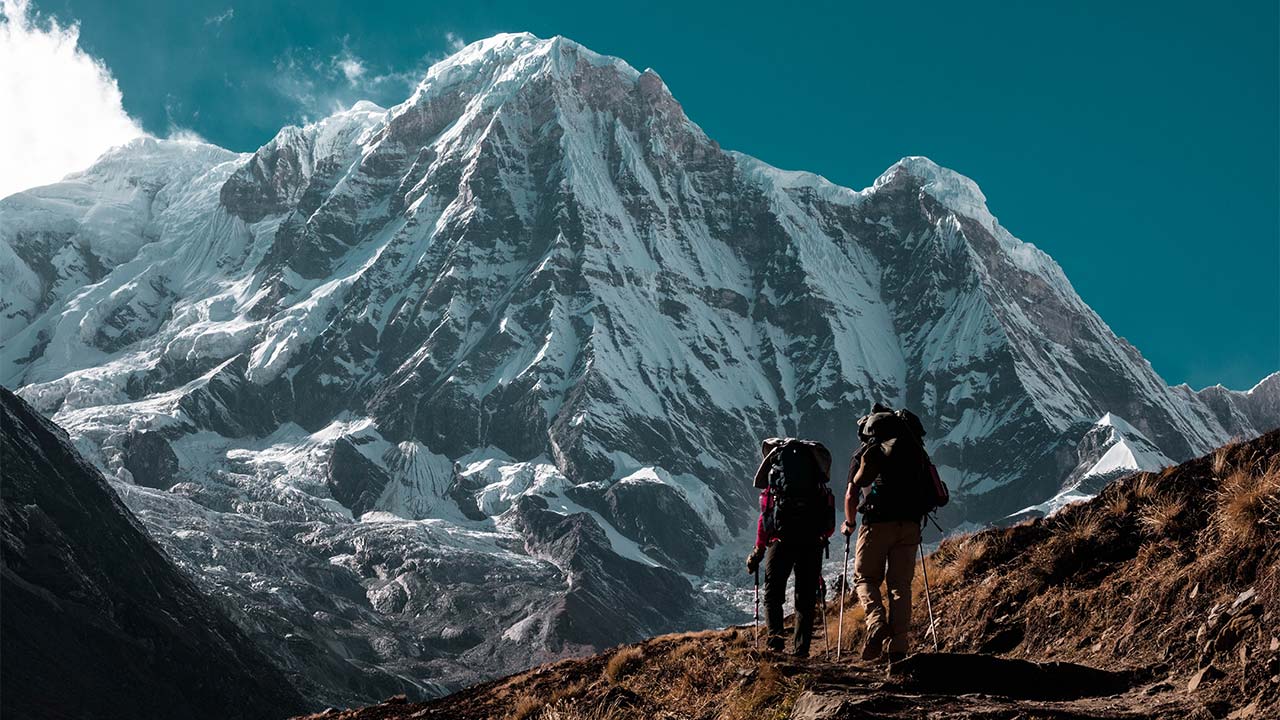
➔ Fatality-to-Summit Ratio
If you are wondering why Annapurna 1 is so dangerous, its not just the height of the mountain but also its fatality-to-summit ratio. For decades, Annapurna I recorded the highest death rate among all 8,000-meter peaks. From 1950 to 2018, out of roughly 244 successful summits, there were 72 recorded climber deaths on the mountain slope. This makes Annapurna I one of the deadliest mountains in the world, with a fatality rate of around 33%.
To put a more transparent perspective on the matter, Mount Everest has a historical fatality rate of 3.3%. K2, the second-tallest peak in the world, has a fatality rate of 23% to 25% which is still lower than Annapurna, considering it is a higher and more technical peak. Mt Cho Oyu (8,201m), the sixth-highest peak out of 14, has a fatality rate of 1.4%. It is the lowest death-to-summit ratio among all eight-thousanders.
Why is Annapurna So Dangerous? The Key Reasons
Both climbers and researchers agree that Annapurna I’s deadly reputation is not just a matter of chance. It is, in fact, built on very real and measurable dangers. When people ask, ‘Why is Annapurna so Dangerous?’ Or ‘Why is Annapurna I the Deadliest Mountain?’, the answer lies in four major interconnected factors.
➔ Unstable Avalanche-Prone Slopes
One of the primary reasons why Annapurna is so dangerous is its geography. The mountain’s steep faces, the South Face and the North Face, in particular, are notorious for avalanches. Many of the Annapurna’s recorded deaths are directly tied to the unpredictable avalanches on the mountain. Unlike Mount Everest, where altitude sickness, exhaustion and falls are primary causes for death, most deaths on Annapurna are due to massive snow slides.
In 1991, there was an avalanche on Annapurna’s South Face that resulted in the deaths of 6 climbers. Likewise, in October 2014, the Annapurna region experienced one of the most devastating series of avalanches and blizzards, which resulted in deaths of at least 43 people, including trekkers, Sherpas and local guides. This event is known as the deadliest disaster in Nepal’s trekking history that occurred during the peak season. This constant threat of avalanches means that climbers are gambling with forces of nature beyond their control. Thus, making Annapurna an unpredictable battlefield.
➔ Extreme Technical Difficulties
When asked why is Annapurna so hard to climb, the mountaineers and experts point to the terrain of the mountain. The South Face of Annapurna was first climbed by a British expedition team led by Chris Bonington, with Don Whillans and Dougal Haston in 1970. This section of the mountain is considered one of the most technically demanding walls on earth. During the expedition, climbers have to face steep ice cliffs, narrow ridges, serac falls and unstable glaciers.
Unlike Cho Oyu or Shishapangma, which are considered more accessible, the southern slope of the mountain demands advanced technical expertise. Even the ‘easier’ North Face route still involves a dangerous icefall section and crevasses where a single misstep can be fatal. The extreme technicality of this 10th-highest on the planet explains why it has only less than 400 successful ascents in over 70 years.

➔ Harsh and Unpredictable Weather
Another reason why Annapurna is so dangerous is its location. This peak is located in Nepal’s central Himalayan region, where the weather patterns are generally brutal and unstable. This part of the Himalayas is exposed to both monsoon moisture from the south and the jet stream winds from the north. So, the sudden blizzards and whiteouts are common in this area. During the summit windows, climbers often have only 2-3 days wth favorable weather conditions suitable for the summit push during each climbing season.
A delay, even if it is just 12 hours, can mean being trapped in life-threatening storms on the treacherous slopes of the mountain. Take the 2014 Annapurna disaster as an example, where severe snowstorms exacerbated by Cyclone Hudhud struck the trekkers on the Annapurna Circuit. This cyclone, which originated from the Bay of Bengal, resulted in heavy snowfall, high winds and near-zero visibility, leaving the trekkers with little chance to escape.
Compared to the Everest region, where weather forecasting is more predictable due to heavy monitoring, Annapurna’s weather volatility adds another layer of lethal risk during the expedition.
➔ Difficult Rescue and Accessibility
Finally, Annapurna is not deadly only because of the risk of avalanches and weather, it is also because of the difficulty in accessibility and rescue operations. This peak in the north-central part of the Himalayas is located in the remote section of Annapurna Conservation Area, which has limited infrastructure. Helicopter rescues in the Annapurna region are very challenging, particularly above 6,500 meters. The combination of high-altitude, thin air, extreme cold, strong winds and difficult terrain makes the rescue operations incredibly risky.
Thus, climbers must rely on self-rescue in most situations. In contrast, Everest has more fixed ropes, Sherpa support and established camps that make rescue more feasible (although still dangerous). This handicap in accessibility means that even minor injuries or altitude sickness can turn into fatal situations.

Comparing Annapurna With Other 8,000ers
When mountaineers debate why is Annapurna the deadliest mountain, the answer is pretty much evident when compared to other 8,000ers. Annapurna I consistently shows a much higher fatality-to-summit ratio despite not being the tallest in the class.
Annapurna I vs. Everest (8,848m)
Everest is taller, but Annapurna is far more deadly than Everest due to the risk of avalanches and technical terrain.
Everest
- By 2023, over 11,500 summits of Mount Everest had been recorded; the mountain has a historical fatality rate of 3.3%
- In modern guided expeditions, the Everest fatality rate has dropped to 1% thanks to fixed ropes, commercial logistics, and helicopter rescue options
Annapurna I
- As of late 2024, around 478 people have successfully summited Annapurna I and there have been 73 recorded deaths, making it one of the deadliest peaks in the 8,000 class
- Historically, the fatality rate on the mountain is 33% which is almost 10 times higher than on Everest
Annapurna I vs. K2 (8,611m)
K2 may be more technically challenging in overall, but statistically, Annapurna remains deadlier
K2
- This ‘Savage Mountain’ is infamous for its technical climbing and unpredictable weather conditions. As of 2023, approximately 800 people have reached the summit and about 96 climbers have lost their lives during the summit attempt
- Historically, the fatality rate on K2 was around 23% to 25%, but with modern safety, the fatality rate has reduced to around 13%
Annapurna I
- Despite being 500 meters shorter, Annapurna I has historically killed a higher percentage of climbers than K2
Annapurna I vs. Nanga Parbat
Nanga Parbat earned its nickname for tragedies in the mid-20th century, but Annapurna’s fatality numbers are still harsher
Nanga Parbat
- Nanga Parbat is known as the ‘Killer Mountain’ among the 8,000-meter giants; approximately 80 climbers have died on the mountain during the summit
- It has a fatality rate of around 21% making it one of the deadliest peaks in the class
Annapurna
- With a nearly 33% fatality rate historically, Annapurna eclipses Nanga Parbat’s danger level, a mountain truly more threatening than the killer mountain of the world
Annapurna I vs. Cho Oyu
Cho Oyu is a beginner-friendly 8,000-er and Annapurna is the pak that most climbers avoid until they have mastered others
Cho Oyu
- Mount Cho Oyu is considered the easiest peak in the 8,000-meter class; it has over 4,000 successful summits
- The fatality rate on Cho Oyu is 1.4%; this peak has the lowest death-to-summit ratio among all eight-thousanders.
Annapurna
- Compared to Cho Oyu, Annapurna stands at the opposite end of the spectrum, steep, avalanche-prone and far more lethal
These comparison charts make it clear why climbers and experts repeatedly emphasize ‘Why Annapurna is so dangerous. Annapurna I is not dangerous because of its height, but because of its ratio of summits to death statistics, which makes it the most lethal alpine mountain on Earth.

Stories and Notable Tragedies on Annapurna
The numbers and ratios explain the part of Annapurna’s danger, but the human stories behind them reveal the true and unforgiving nature of the mountain. Over decades, Annapurna has claimed the lives of elite mountaineers, entire expedition teams and unsuspecting trekkers. Thus, cementing its reputation as the ultimate test of survival in the Himalayas.
- The 1950 French Ascent: The very first ascent of Annapurna I on 3rd June 1950, when the French climbers Maurice Herzog and Louis Lachenal reached the summit but suffered catastrophic frostbite on descent. Both of the climbers suffered from severe frostbite; Herzong lost all of his toes and most of his fingers and Lachenal lost all his toes. From the very beginning, Annapurna I showed that even success would come with devastating consequences.
- The 1970 South Face Expedition: The British expedition team led by Chris Bonington, with Don Whillans and Dougal Haston, achieved the first ascent of Annapurna’s South Face in 1970. This is one of the steepest and most difficult walls on Earth. Though the expedition was successful, it came at a cost. Ian Clough, one of the team members, was killed by a falling serac below Camp 2. Since then, the South Face has become notorious for death as its sheer walls and collapsing ice structures make it one of the most dangerous routes ever on any 8,000er.
- 2014 Annapurna Disaster: This is one of the recent infamous disasters. On 14 October 2014, Cyclone Hudhud brought sudden snowstorms and avalanches to the Annapurna region. This incident caused the deaths of at least 43 people, including trekkers, Sherpas and local guides; more were stranded in whiteout conditions. This incident remains one of the worst trekking disasters in Nepal’s history.
Why Do Climbers Still Attempt Annapurna?
Despite the terrifying reputation and the grim statistics of this tenth-highest peak in the world, it still remains a beacon for climbers around the world. The question naturally arises: if Annapurna is so deadly, why risk it all? Well, the answer lies in the unique blend of the mountain’s prestige, psychology and the inherent human drive to test limits. Among the mountaineers, climbing Annapurna carries a weight that other peaks simply cannot match. Yes, Everest attracts climbers for its fame. But the Annapurna is sought after for its difficulty and exclusivity.
For many alpinists, Annapurna is the mountaineer’s mountain, not about the fame and more about proving mastery. Every climber is familiar with Annapurna’s statistics, the highest fatality rate among 8,000-ers, especially before the modern safety practices improved numbers. Yet, that risk itself defines the climb. Climbers often see Annapurna I as the ultimate proving ground of high-altitude skills. Many of the climbers who attempt this mountain peak are already seasoned 8,000-meter climbers, veterans seeking to test the very edge of what they can handle.
Likewise, in high-altitude mountaineering, reputation matters. Climbers who summit Annapurna I instantly gain respect in the climbing community. It is considered a career-defining climb that is often compared to K2 in terms of respect. For those who are chasing all 14 of the 8,000ers, Annapurna I is a feared but mandatory step and many delay it until they feel fully prepared. So, why is Annapurna so dangerous? Ironically, the very dangers that make this peak infamous also make it irresistible to elite climbers. For climbers, overcoming challenges and conquering the summit is not just a climb, but a statement ‘I faced the deadliest peak of them all, and I survived’.
"Annapurna is a beast. You cannot underestimate it. One mistake here can cost you everything."--- Nirmal Purja

